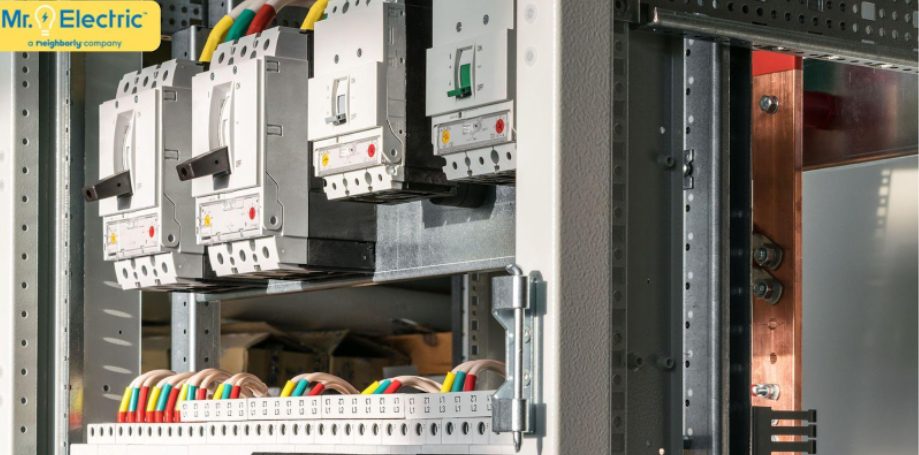A circuit breaker is designed to automatically shut off power whenever it detects an issue such as an overload, short circuit, or ground fault. While this function helps prevent electrical fires and damage to your appliances, a breaker that keeps tripping can quickly become a source of frustration. More importantly, it’s usually a sign that something in your home’s electrical system needs attention. Here’s what you should do when your circuit breaker won’t stay on.
Step 1: Identify What Caused the Trip
The first thing to do is figure out what triggered the breaker. Breakers often trip because too many devices are plugged into one circuit. For example, running a space heater, microwave, and hair dryer on the same circuit is a common cause. In other cases, it may be a faulty appliance or even a wiring issue.
Check what devices were in use when the breaker tripped. If the same appliance causes the problem repeatedly, it’s likely the source of the issue.

Step 2: Reset the Breaker Properly
Once you’ve unplugged devices or turned off appliances, head to your breaker panel. The tripped breaker will usually be in a middle position between “ON” and “OFF.” To reset it, first flip it fully to “OFF” and then switch it back to “ON.” If it stays on, you’ve likely solved the immediate problem. If it trips again immediately, you may be dealing with something more serious like a short circuit or ground fault.
Step 3: Reduce the Load on the Circuit
If you know the breaker is tripping due to overload, try redistributing the devices across different circuits. For example, avoid plugging all your high-wattage appliances into one outlet strip. Use dedicated outlets for energy-hungry appliances such as microwaves, toasters, or portable heaters. If your home’s electrical demand regularly exceeds what your circuits can handle, it might be time to have an expert electrician in Weatherford install additional circuits or upgrade your panel.
Step 4: Test Suspect Appliances
If the problem seems tied to one device, test it on another circuit. If it still causes the breaker to trip, the appliance is faulty and should be repaired or replaced. Continuing to use a damaged device not only risks your breaker tripping again but could also create shock or fire hazards.
Step 5: Look for Signs of Electrical Issues
Sometimes, a tripping breaker points to problems within your home’s wiring. Warning signs include burning smells near outlets, scorch marks, buzzing sounds, or warm outlets and switches. These are warning signs of a possible short circuit, ground fault, or deteriorating wiring that requires immediate professional attention.
Step 6: Don’t Ignore Recurring Trips
Resetting the breaker every time it trips without addressing the cause is dangerous. Breakers are meant to protect you, not to be treated as an inconvenience. Ignoring the warning signs could put your home at risk of an electrical fire or serious damage to your appliances.
Step 7: Call a Licensed electrician in Weatherford
If your breaker trips frequently despite reducing loads and checking appliances, it’s time to call in an electrician in Weatherford. A licensed professional can test the breaker, inspect wiring, and identify underlying problems safely. They can also determine if the breaker itself is faulty, as older or worn-out breakers may trip more easily than they should. In some cases, replacing the breaker or upgrading your electrical panel is the best long-term solution.
Tripping Circuit Breakers? Contact Mr. Electric of Fort Worth for Professional Help
Do your circuit breakers keep tripping? Have you noticed signs of electrical faults in your home? Contact the electricians at Mr. Electric of Fort Worth for electrical repair service. Whether you’re dealing with circuit overload, short circuits, ground faults, or worn-out circuit breakers, we are here to help. Our team has years of experience and advanced tools to diagnose all kinds of electrical issues and make repairs. Contact us now to request service from our licensed electricians.




























